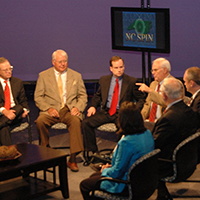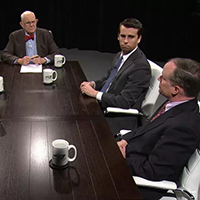State's growth has slowed and isn't uniform
Published December 27, 2014
by Doug Clark, Greensboro News-Record, December 26, 2014.
Earlier this week, Gov. Pat McCrory touted North Carolina's population growth during 2014.
The state increased by 95,047 residents from July 1, 2013, to July 1, 2014, to become the country's ninth-most-populous state, passing Michigan.
From the governor's office:
“'People want to live in a place where they can fulfill their potential,' Governor McCrory said, 'And for an increasing number of Americans and people throughout the world, that place is North Carolina.'
"The governor cited job creation, lower taxes and the state’s quality of life as some of the reasons for North Carolina’s growth."
We're all proud to live in an attractive state, but what the governor didn't say is that 2014's growth number is close to a 25-year low.
North Carolina's average annual population growth since 1990 is 135,528. The state has grown by nearly 3.4 million people since then.
Only three years have seen lower population growth than 2014 -- 91,865 in 2011, 93,663 in 1990 and 94,434 in 2003.
The real question is why our growth trend is down -- below 100,000 in each of the past four years. As recently as 2007, the state grew by more than 200,000 people.
One obvious problem is the drag created by some 35 counties that lost population from 2010 to 2013, which you can see on this map produced by the N.C. Office of State Budget and Management.
The state has strong growth areas centered on the Triangle, Charlotte and Wilmington, but too many low-growth and no-growth counties.
If the key to growth is lower taxes, job creation and quality of life, then North Carolina overall must be doing the right things -- but not nearly as well as it once did, and certainly not uniformly throughout the state.







